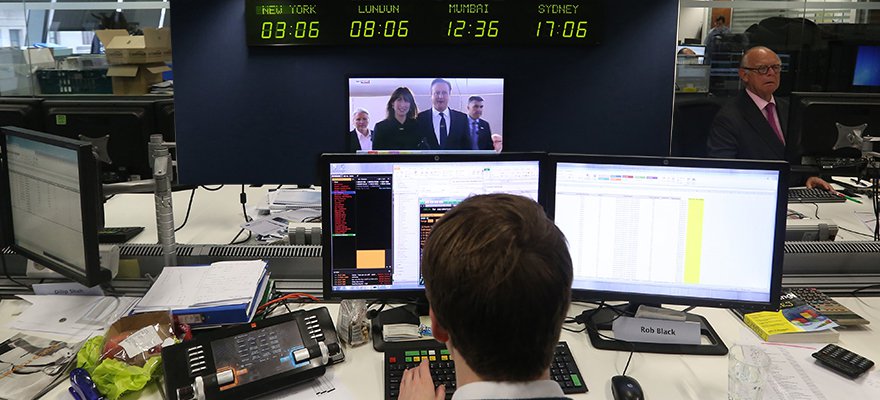This article was written by Adinah Brown of Leverate.
The times they are a changing in the financial trading world – the year 2017 has continued to usher in the previous year's trends that saw the tightening of regulations, increasingly aggressive and prolific competition and profit margins that are ever more thinly spread.
[gptAdvertisement]
Many are anticipating that the industry will experience wide scale consolidation, where small brokerages that don't have the resources to compete will be swept away, while larger and more established brokerage firms will be able to stand their ground and may in fact, have the opportunity to grow. According to Sami Mana, General Manager at Leverate, the determining factors are going to come down to technology and the use of media.
The current situation appears bleak, with the industry becoming heavily reliant on affiliates to ensure a constant inflow of traders. Whilst the most profitable brokerages tend to have an extensive pool of affiliates who funnel through traders, using affiliates takes a heavy toll on a brokerage's profit margin. It's a situation where there are too many hands in the pot and those hands are getting bigger and more demanding.
Operating under this framework typically involves a CPA somewhere between $600 to $700. On top of this is the broker’s own operational and administrative expenses that adds another $300 to $400 to the CPA. On average, this brings the financial cost to $1,100 per client.
Potential Losses?
Once that client starts trading, an initial $200 is made on the FTD and over the course of the client's lifetime (which tends to last on average between five to six months), the brokerage will typically generate revenue of around $1,500 from that client. While this means a $400 profit, even this amount is then impacted by the client's trading P&L. So, whilst on paper the broker may be profitable, in reality their actual cash flow could be much less than what's indicated, potentially even running at a loss.
On top of this, another financial burden carried by brokerages is the requirement to have a substantial amount of cash held in capital Liquidity . Regulations require that a broker holding one million dollars in client funds must hold one million dollars in liquidity funds, to have sufficient money to cover all their client's holdings.
This money is deposited via a PSP, which has rolling reserves where the payout is only once a week, meaning the broker needs to cover the interim payouts from their own profit reserves.
Under these financial pressures and obligations, the recent strictures issued by the dominant European regulation authorities makes it even harder to keep a brokerage's profitability margin from being in the red. The new requirements, which include caps on leverage levels, no bonuses, no aggressive sales techniques and fixed incomes for sales staff, will all take further from the profitability of most existing models.
Inevitably, the consequence is likely to be a dramatic reduction in the number of active brokers and a gradual development towards industry wide consolidation. According to Mr Mana however, once this storm passes, the industry as a whole stands to benefit, and profitability may increase as brokerages will hold bigger accounts and without necessarily having fewer traders. With that in mind, the compelling question at this point becomes - what is the antidote that will allow a brokerage to survive?
Fight or Flight
To begin with, brokers will be faced with two options, ‘fight’ and stay in the game or take ‘flight’. If they do choose to stay, then in true Braveheart style determination they will need to either ‘fight alone’ by incorporating technology more comprehensively into existing systems or ‘combine forces’ either with another brokerage or by operating under a regulatory licensing service.
The core business operation of a broker occurs through a three-stage process consisting of 'Acquisition' (bringing in leads), 'Conversion' (turning those leads into clients) and 'Retention' (retaining those clients). To stay viable, a broker needs to improve their profitability in each of these three parameters as much as possible.
At the stage of acquisition, the broker who chooses to venture on, either on their own or in a partnership, must work to improve the quality of their internal media and be less reliant on external affiliates. Internal media marketing, which costs on average up to $100 per acquisition, is far more sustainable than current CPA rates that represent a key factor in the industry’s red ocean.
A broker’s ability to be self-reliant through their own internally developed marketing funnels will adjust their expenditure equation entirely, dramatically impacting their profitability. On the conversion side a broker will need to start using technology tools and orient themselves away from operation and service.
Mr Mana firmly anticipates that technology is going to be the main vehicle that will allow brokers to bridge these new changes. And it will be the broker's ability to adapt their operations to incorporate new forms of technology that will ultimately determine their survival.
Such technology includes automation tools like Optim8 and Activ8, and sophisticated CRMs and tools that enable brokers to increase their range of offerings in terms of instruments and asset classes. Likewise, the retention stage will also need to be more dependent on trading technology, using tools that facilitate social trading to ensure ongoing deposits. These types of fintech tools can bring operational results that cannot otherwise be gained, giving these brokerages a definite advantage in the market.
Measuring Success
The incorporation of this technologically oriented set up is going to have human resource implications. A broker's main composition of staff will no longer be sales and retention personnel, but rather a more professional 'success' team that is knowledgeable in the use and application of these technological tools.
A sales team, which was using basic software and had an emphasis on service, will no longer suffice and will need to be replaced by a much smaller team that will manage technological systems to ensure a smooth ongoing operation.
The other option available to brokers is structural consolidation. This means changing their business structure either by forming a complimentary partnership with another broker or by offloading their risk and regulatory management to an external company that will provide that oversight.
The option to venture alone with the use of technology is indeed risky, but the potential for enormous profits to be made is much greater. On the flip side, consolidating with another broker is less risky but by the same token this option represents strong prospects for continued survival.
In its current state, the Forex industry resembles a pie that is not only decreasing in size, but is being ever more thinly cut between increasing numbers of players.
These recent industry developments which appear to be placing impossible hurdles on brokerages, may in fact be heaven sent. The industry will be forced to consolidate, many brokers will be lost by the wayside, but those that are able to withstand will reap the benefits of an FX industry that now resembles are much larger pie, with far fewer players competing for a slice.
As the industry transitions into this new era it will ultimately come down to the broker's ability to adapt by incorporating technological solutions and media marketing into their existing processes that will determine their ability to survive and thrive.

















